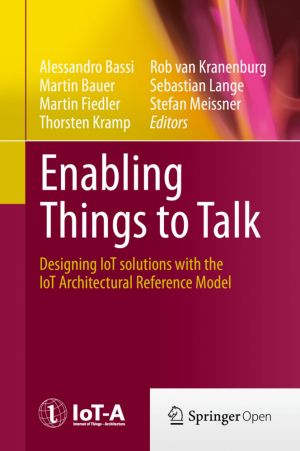Enabling Things to Talk
Designing IoT solutions with the IoT Architectural Reference Model
by Alessandro Bassi, Martin Bauer, Martin Fiedler, Thorsten Kramp, Rob van Kranenburg, Sebastian Lange, Stefan Meissner
DescriptionDetailsHashtagsReport an issue 






Book Description
The Internet of Things (IoT) is an emerging network superstructure that will connect physical resources and actual users. It will support an ecosystem of smart applications and services bringing hyper-connectivity to our society by using augmented and rich interfaces. Whereas in the beginning IoT referred to the advent of barcodes and Radio Frequency Identification (RFID), which helped to automate inventory, tracking and basic identification, today IoT is characterized by a dynamic trend toward connecting smart sensors, objects, devices, data and applications. The next step will be "cognitive IoT," facilitating object and data re-use across application domains and leveraging hyper-connectivity, interoperability solutions and semantically enriched information distribution.The Architectural Reference Model (ARM), presented in this book by the members of the IoT-A project team driving this harmonization effort, makes it possible to connect vertically closed systems, architectures and application areas so as to create open interoperable systems and integrated environments and platforms. It constitutes a foundation from which software companies can capitalize on the benefits of developing consumer-oriented platforms including hardware, software and services. The material is structured in two parts. Part A introduces the general concepts developed for and applied in the ARM. It is aimed at end users who want to use IoT technologies, managers interested in understanding the opportunities generated by these novel technologies, and system architects who are interested in an overview of the underlying basic models. It also includes several case studies to illustrate how the ARM has been used in real-life scenarios. Part B then addresses the topic at a more detailed technical level and is targeted at readers with a more scientific or technical background. It provides in-depth guidance on the ARM, including a detailed description of a process for generating concrete architectures, as well as reference manuals with guidelines on how to use the various models and perspectives presented to create a concrete architecture. Furthermore, best practices and tips on how system engineers can use the ARM to develop specific IoT architectures for dedicated IoT solutions are illustrated and exemplified in reverse mapping exercises of existing standards and platforms.This open book is licensed under a Creative Commons License (CC BY-NC). You can download Enabling Things to Talk ebook for free in PDF format (8.2 MB).
Book Details
Title
Enabling Things to Talk
Subject
Computer Science
Publisher
Springer
Published
2013
Pages
352
Edition
1
Language
English
ISBN13
9783642404023
ISBN10
3642404022
ISBN13 Digital
9783642404030
ISBN10 Digital
3642404030
PDF Size
8.2 MB
License

Related Books
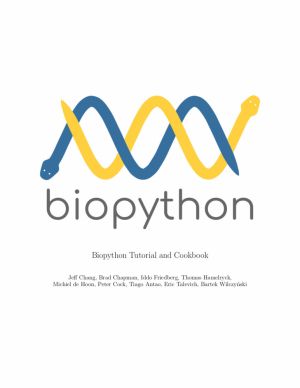
The Biopython Project is an international association of developers tools for computational molecular biology. Python is an object oriented, interpreted,flexible language that is becoming increasingly popular for scientific computing. Python is easy to learn, hasa very clear syntax and can easily be extended with modules written in C, C++ or FORTRA...

This book presents good practices in Asia and ASEAN countries for effectively promoting advances in response to climate change, which can help to achieve sustainable development in Asia and around the world. As a proposal, the aim is to influence the discussions at COP 21 by providing a positive agenda with concrete actions from an Asian perspectiv...
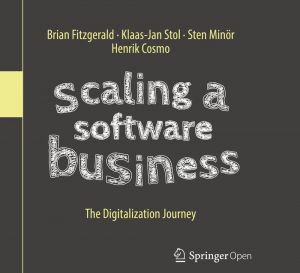
Software has changed the rules of the game. The world talks about the digitalization in industry and society – how the focus has shifted from producing tangible things towards software and services. This trend started many years ago, but is now affecting every company, whether it's a software company or not. There are many companies that hav...
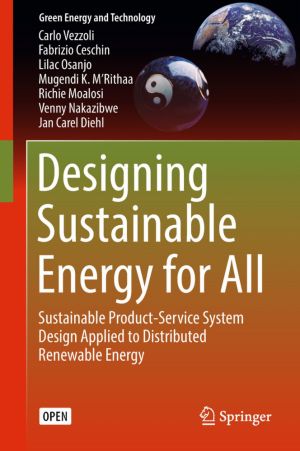
This book addresses the issue of diffusing sustainable energy access inlow- and middle-income contexts.
Access to energy is one of the greatest challenges for many people living in low-income and developing contexts, as around 1.4 billion people lack access to electricity.Distributed Renewable Energy systems (DRE) are considered a promising approa...
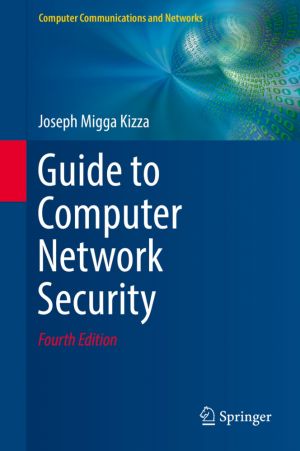
This definitive text/reference on computer network and information security presents a comprehensive guide to the repertoire of security tools, algorithms and best practices mandated by the rapidly evolving ubiquitous technology we are increasingly dependent on. Fully revised and updated, this timely new edition encompasses the latest developments ...
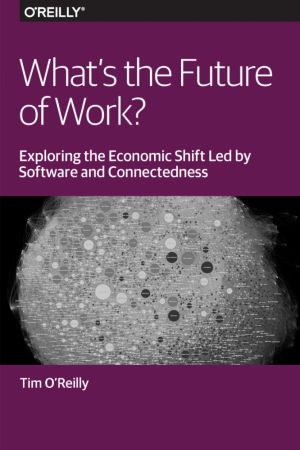
What is the future when more and more work can be done by intelligent machines instead of people, or only done by people in partnership with those machines? What happens to workers, and what happens to the companies that depend on their purchasing power? What's the future of business when technology-enabled networks and marketplaces are better...

